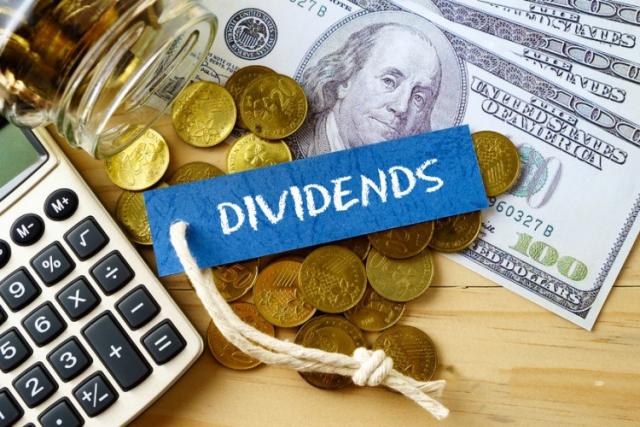In an era where financial independence and passive income dominate personal finance conversations, dividend stocks have become something of a buzzword. They’re often presented as the golden ticket to earning money while you sleep—appealing especially to millennials and Gen Z investors seeking alternatives to traditional employment income. But is the promise of dividends truly a path to sustainable passive income, or is it just another overhyped trend in the investing world?
Cosa sono davvero i titoli a dividendo?
Dividend stocks are shares of companies that return a portion of their profits to shareholders on a regular basis, typically quarterly. These payouts, known as dividends, are often seen as a sign of a company’s financial health and stability. While not all companies pay dividends, those that do are usually established, cash-generating firms—think Procter & Gamble, Coca-Cola, or Johnson & Johnson.
Dividends are paid per share, so owning more shares means receiving more income. For example, if a company pays € 1.50 per share annually and you own 100 shares, you’ll receive € 150 per year in dividends. While that may sound modest, the returns can become meaningful when compounded over time or scaled with larger portfolios.
Il fascino del reddito passivo
The idea of earning income without active labor is undeniably attractive. Dividend investors often aim to build portfolios that generate enough regular income to cover living expenses or supplement their salary. In fact, with the average dividend yield of the S&P 500 hovering around 1.4%–1.6% as of early 2025, it’s possible—though not easy—to craft a portfolio that produces a decent return.
Some specialized ETFs focus solely on dividend-paying stocks, such as the Vanguard Dividend Appreciation ETF (VIG) or Schwab U.S. Dividend Equity ETF (SCHD). These funds offer exposure to a diversified mix of companies with strong dividend histories. SCHD, for instance, had a trailing 12-month yield of around 3.5% as of Q1 2025—well above inflation rates, which have recently stabilized around 2.2% in the U.S.
Il rendimento totale conta più del solo rendimento
While the yield is enticing, it’s essential to remember that dividends are only part of the total return. A high dividend yield might come at the expense of a stock’s price performance. For instance, if a company’s share price is stagnating or declining, the overall return—even with dividends—might underperform a broader market index.
In fact, “dividend traps” are a real risk: companies with unusually high yields (say, 7%–10%) might be signaling financial stress. Often, a falling stock price inflates the yield, and the payout may be cut if the firm can no longer sustain it. In 2020, over 190 U.S. companies suspended or slashed their dividends during the pandemic—a harsh reminder that dividends are not guaranteed.
Reinvestire: L'arma segreta
Una delle strategie più efficaci per gli investitori a lungo termine è il reinvestimento automatico dei dividendi attraverso un Dividend Reinvestment Plan (DRIP). Invece di intascare i contanti, si acquistano più azioni, che a loro volta generano più dividendi. Nel corso di decenni, questo effetto di capitalizzazione può aumentare in modo significativo il valore del portafoglio.
Consider this: an investor who put € 10,000 into the S&P 500 in 1993 and reinvested dividends would have approximately € 122,000 by 2023. Without reinvesting, the total would be closer to € 79,000. That’s a difference of over € 40,000 — purely from compounding dividends.
Per chi sono più indicati i titoli a dividendo?
Dividend stocks tend to attract more conservative investors or those entering retirement, but they’re not just for the gray-haired crowd. Young investors can benefit enormously from starting early, especially if they focus on dividend growth—companies that steadily increase their payouts over time. The longer the time horizon, the greater the benefit from reinvestment and compounding.
Inoltre, dato che i tassi d'interesse dovrebbero rimanere relativamente bassi nelle economie sviluppate per il prossimo futuro, i titoli azionari che pagano dividendi offrono un'alternativa interessante alle obbligazioni e ai conti di risparmio a basso rendimento.
Reddito passivo o mito del marketing?
So, are dividend stocks truly passive income? The answer lies somewhere in the middle. Yes, they can provide regular, relatively stable cash flow, and yes, when managed correctly, they can form part of a robust investment strategy. But they aren’t magic—they require planning, research, and periodic portfolio review.
Gli investitori devono evitare la tentazione di inseguire alla cieca rendimenti elevati e concentrarsi invece su qualità, diversificazione e potenziale a lungo termine. L'investimento in dividendi funziona meglio come parte di una strategia più ampia e bilanciata, non come schema di guadagno facile.
Pensiero finale: Reddito con intenzione
Dividend stocks offer an accessible and potentially rewarding path for generating income, especially in uncertain markets. But like any tool, they must be used wisely. Align your dividend strategy with your goals—whether that’s supplementing your income, building wealth over decades, or simply sleeping a little better at night knowing your money is working quietly in the background.
In the end, the smartest investors don’t chase trends—they build consistent habits. And dividend investing, done right, is one of them.

